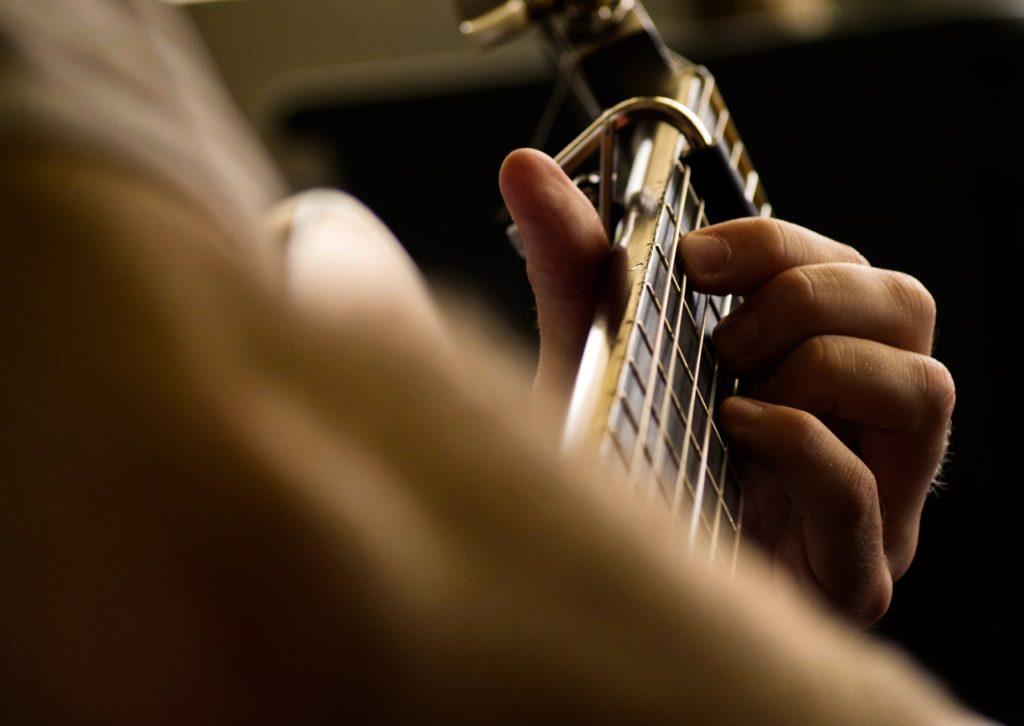To play a virtual keyboard: click here.
Before we look at the G major chord scale, we’ll talk about how the G major scale works. When we use the term scale, it usually indicates a collection of notes used for making melodies and melodic patterns.
- The key of G has these notes: G A B C D E F# G.
- Also, it has this pattern: W W H W W W H (where W = a whole step and H = a half step).
- All major scales use this pattern of whole and half steps.
“Whole and half what?” If you look at the keyboard above, the scale has one key in between each note (the whole steps), except for the notes B & C and F# & G (the half steps).
- Notice that you’ll use F# instead of F, which conforms with the major scale pattern.
- In addition, the labeling of the notes must be kept in alphabetical order.
- Thus, you’d label the black key note F# instead of Gb. Otherwise, you’ll have two versions of G (G and Gb) and no notes labeled with a version of F.
For more on accidentals (i.e., sharps, flats, and naturals), where they came from and how they work, read:


